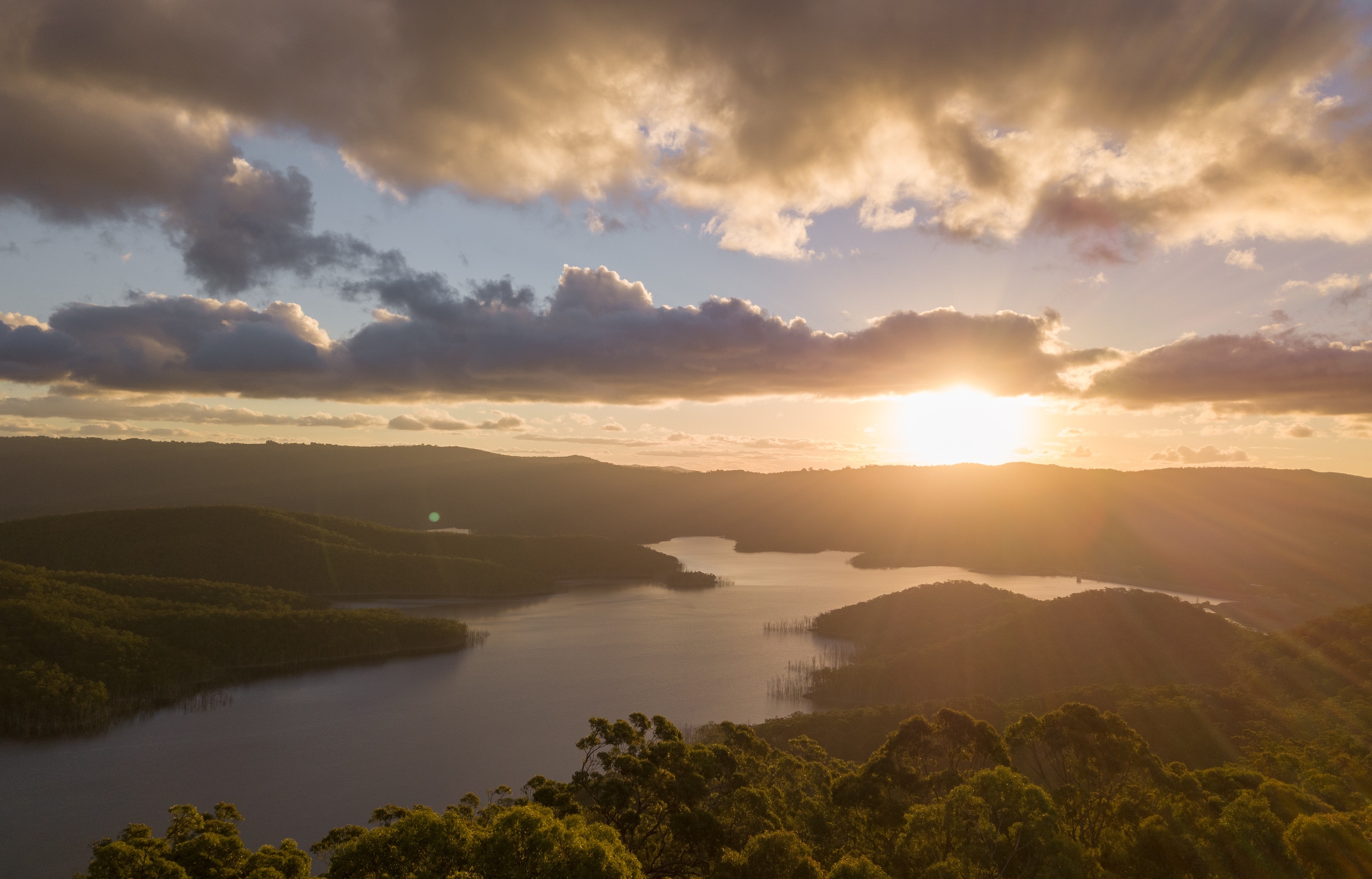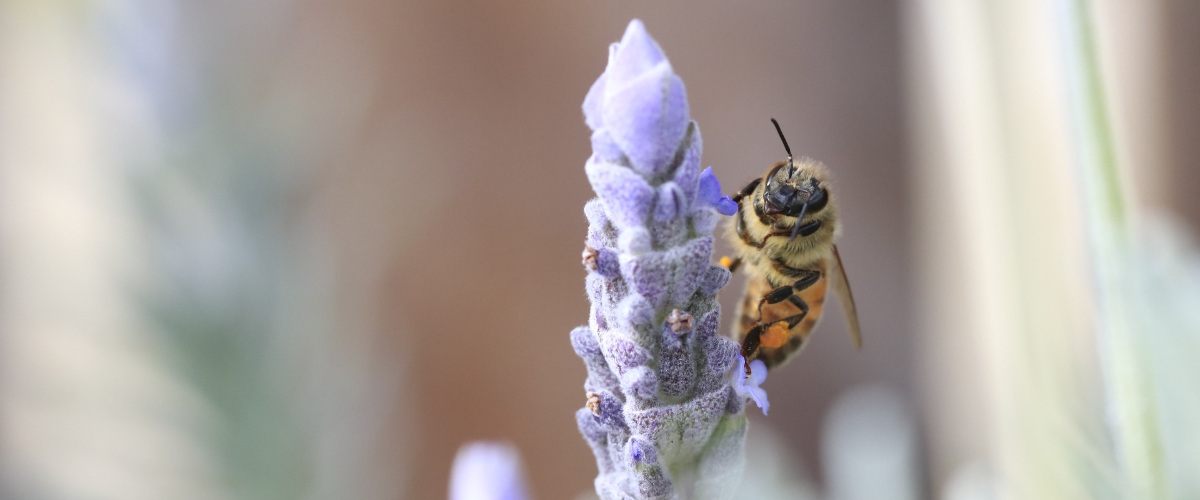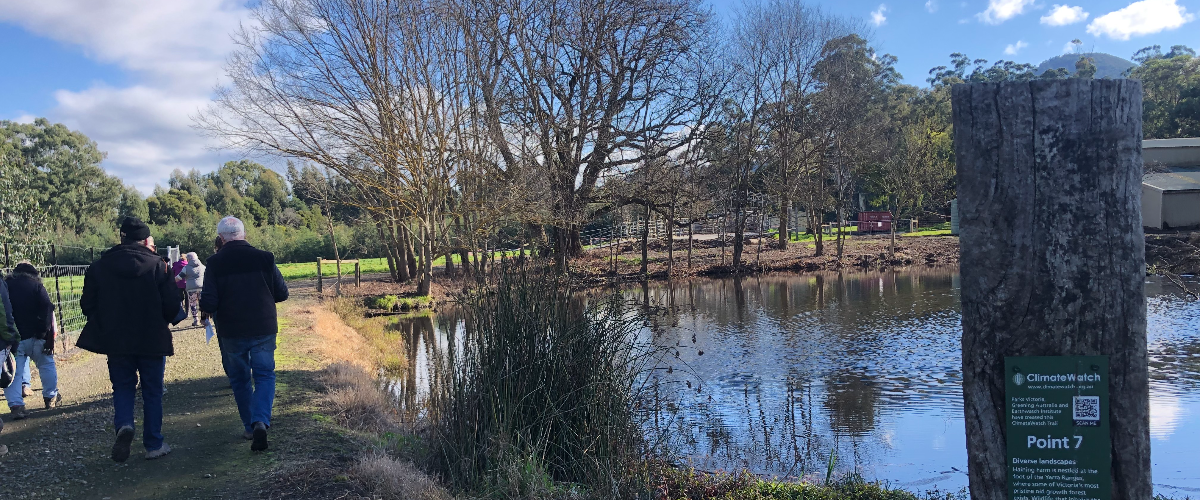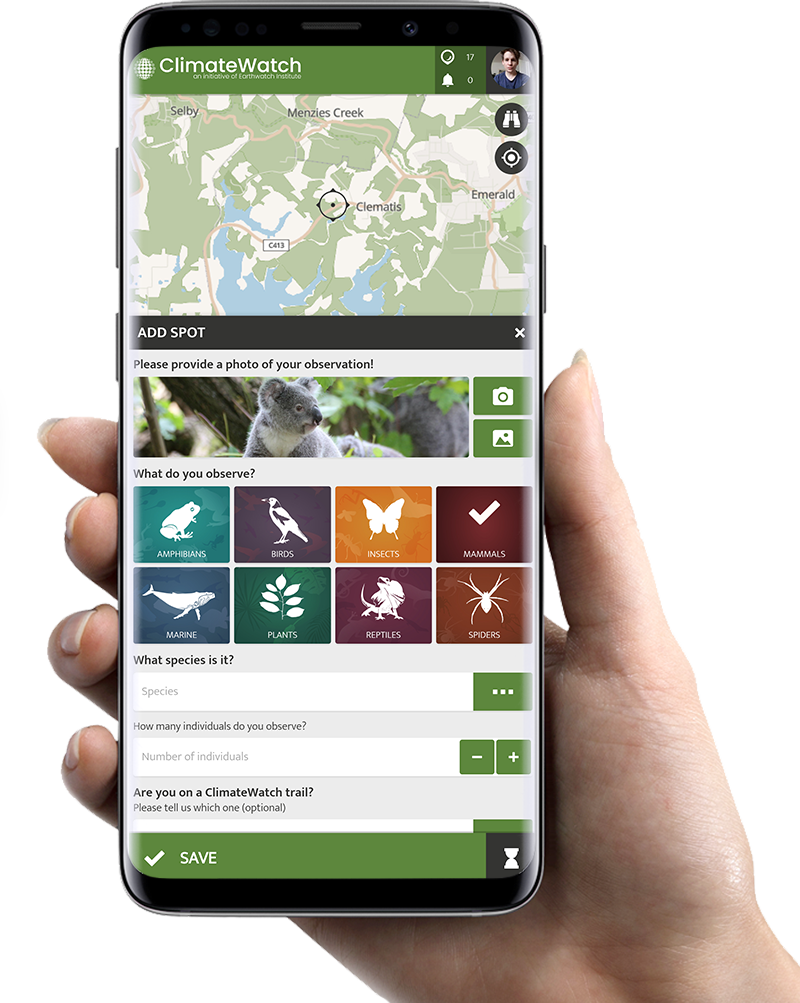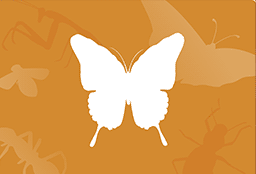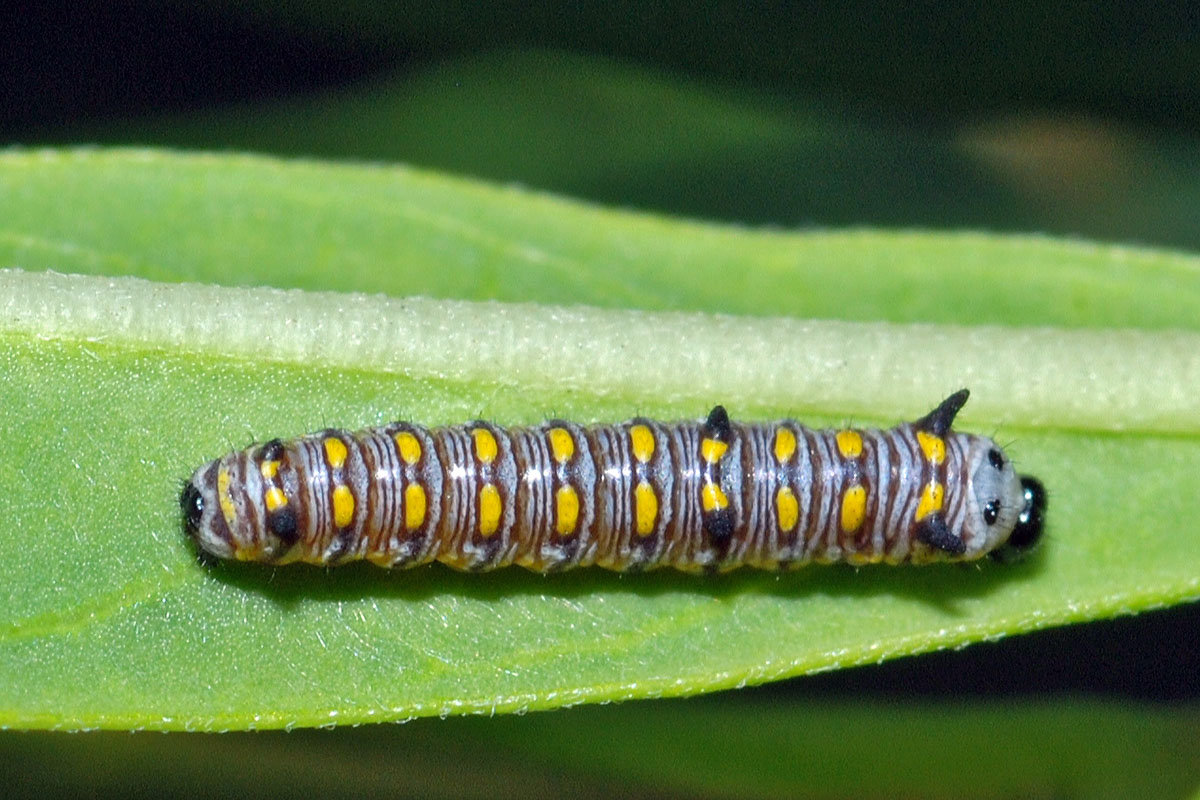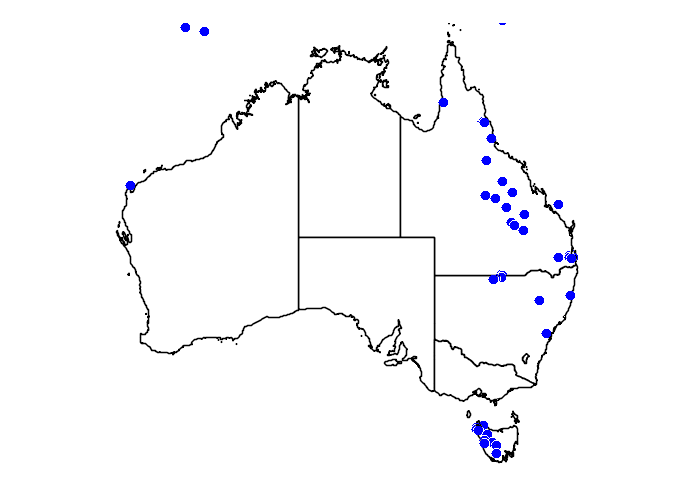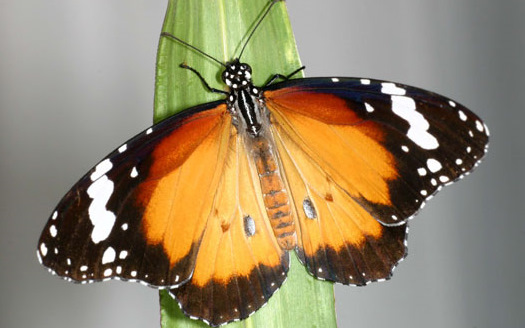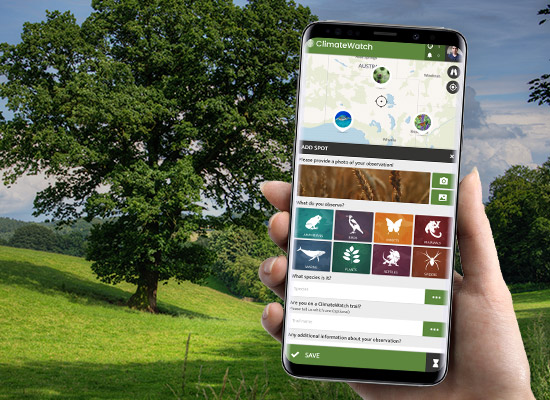Predominantly pale tawny-orange with a heavy black border that encloses large white spots in the forewing. The inner leading edge of the forewing is deep red-brown. The underside is similar to the upper side but paler with narrower black margins. Males have a distinct patch of dark grey sex-scales on the upper side of the hindwing.
The caterpillars have three pairs of tentacles and yellow, white and black rings.
Size
7 - 8 cm wingspan.
Behaviour
Diet
Larval food plants include native milkweeds (Cynanchum and Marsdenia species) as well as introduced milkweeds such as swan plant (Gomphocarpus fruiticose) and red cotton bush (G. curassavica).
Movement
It usually flies slowly from 1 to 2 m above the ground.
Field Guide
Improve your identification skills. Download your Lesser Wanderer field guide here!

